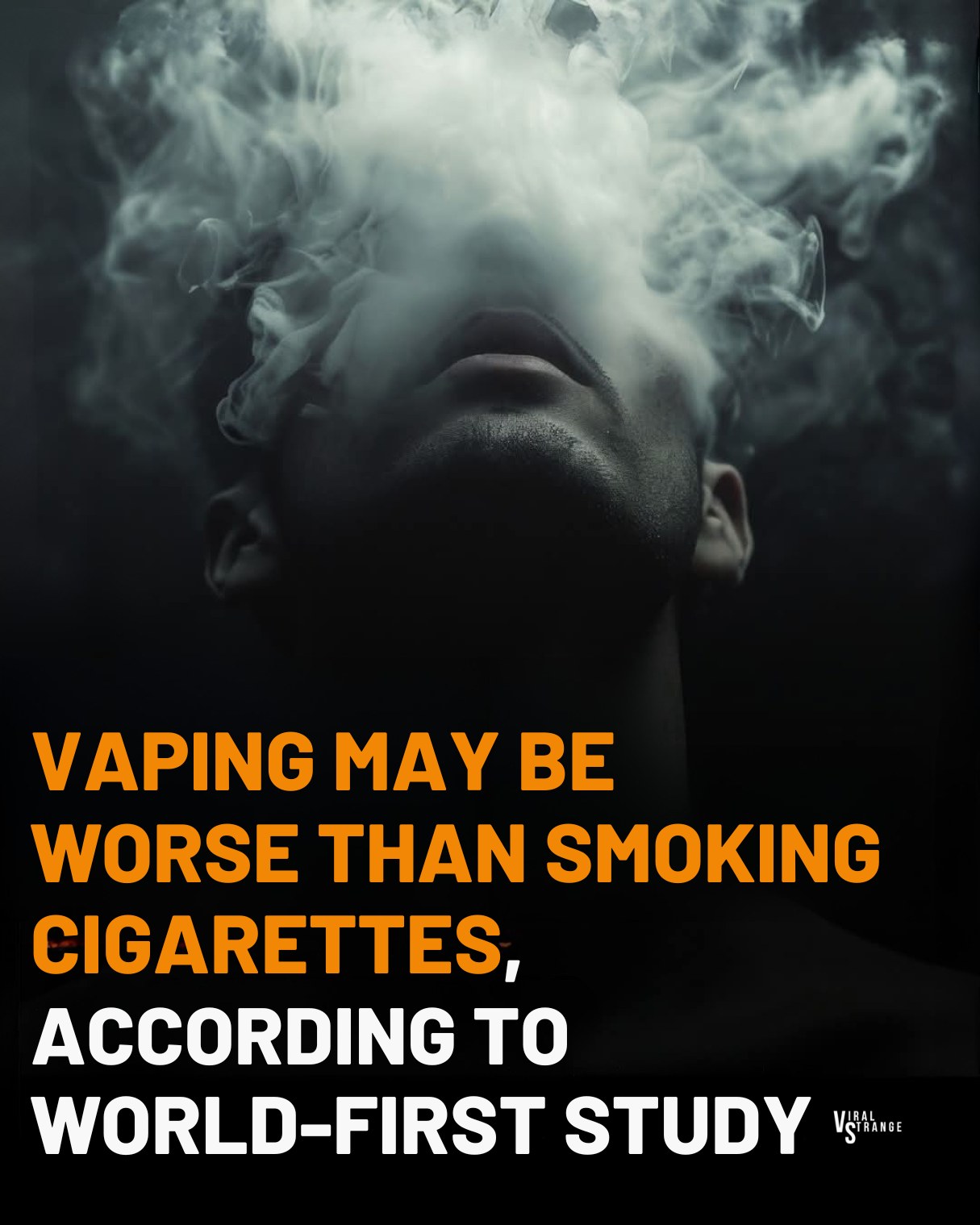Vaping May Be Worse Than Smoking Cigarettes, According to a World-First Study
For years, vaping has been marketed as a safer alternative to traditional cigarette smoking. However, groundbreaking new research from Manchester Metropolitan University in the UK is challenging that assumption. The study, considered the first of its kind, suggests that vaping might not only be as harmful as smoking—but in some ways, potentially worse.

Key Insights from the Study
The research focused on the biological and cellular effects of the chemicals commonly found in vape products, including nicotine, flavoring agents, and other solvents like propylene glycol and vegetable glycerin. Researchers exposed living human cells to these substances and compared the results to cells exposed to cigarette smoke.
Surprisingly, in many cases, cells exposed to vape chemicals showed greater signs of inflammation, DNA damage, and cellular stress than those exposed to cigarette smoke.
Why Might Vaping Be More Dangerous?
1. Hidden Chemical Complexity
While e-cigarettes do not contain tar—the substance in cigarettes linked to lung cancer—they do contain a cocktail of other chemicals. When vaporized and inhaled, these compounds may form new substances, some of which could be toxic. Additionally, many flavored vape liquids include diacetyl and acetoin—chemicals linked to lung diseases like “popcorn lung.”
2. Effects on Blood Vessels and the Heart
The study revealed impaired vascular function among vape users. The chemicals in vape aerosols can cause blood vessels to stiffen and narrow, which increases the risk of hypertension, heart attacks, and strokes. In fact, a separate study involving over 175,000 U.S. adults found that regular vape users had a significantly higher risk of developing heart failure.
3. Potential Brain Health Concerns
Nicotine exposure, especially at young ages, can interfere with brain development and has been associated with memory impairment, mood disorders, and even increased risk of dementia. Vaping devices often contain highly concentrated nicotine, which may amplify these risks.
4. Impact on Lung Health
While e-cigarettes don’t produce tar, the vapor they emit can still irritate lung tissue, leading to chronic bronchitis, asthma exacerbations, and other respiratory diseases. Dual users (those who both vape and smoke) may face compounded damage.
Common Misconceptions About Vaping
Many users, especially young people, believe that vaping is a harmless recreational activity. Flavored options like mango, mint, and cotton candy can be misleadingly appealing. However, the underlying science tells a different story.
“People are unknowingly exposing themselves to risks we are only beginning to understand,” said Dr. Neil Hall, lead researcher of the Manchester study.
What Should You Do If You Vape?
- Limit or Stop Use: If you currently vape, consider reducing your use or seeking support to quit.
- Seek Medical Advice: Talk to your healthcare provider about safe smoking cessation methods, such as nicotine patches, behavioral therapy, or prescription medications.
- Stay Informed: Keep up with the latest research on vaping and e-cigarette safety.
- Protect Others: Avoid vaping around children or vulnerable individuals, as secondhand vapor may also be harmful.
This landmark study underscores a critical point: just because something seems less harmful doesn’t mean it’s safe. Vaping is not without risks—and in light of new evidence, those risks may be far more severe than previously believed.
As science continues to evolve, public awareness and education are essential in helping people make informed decisions about their health.